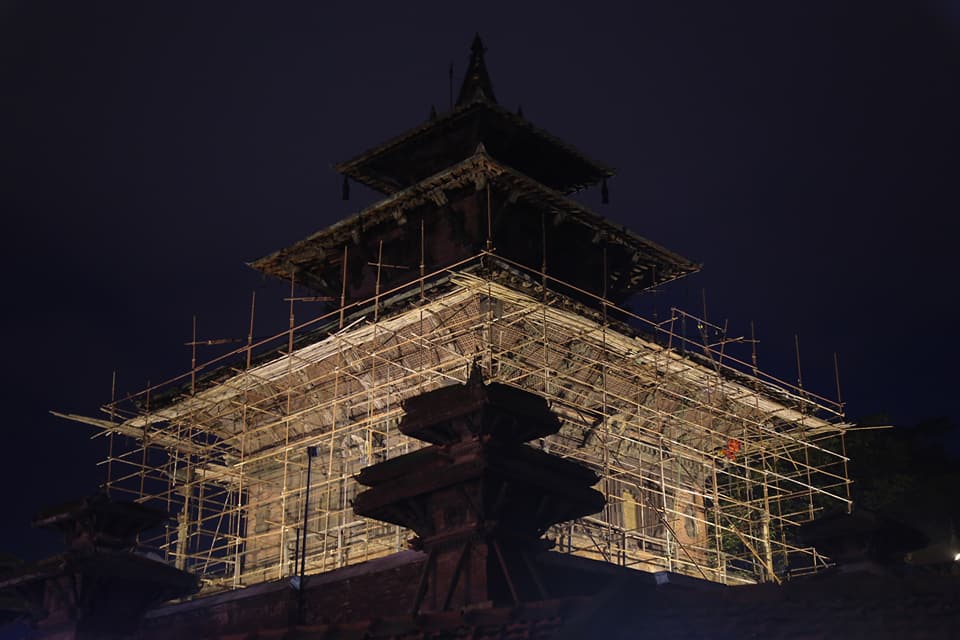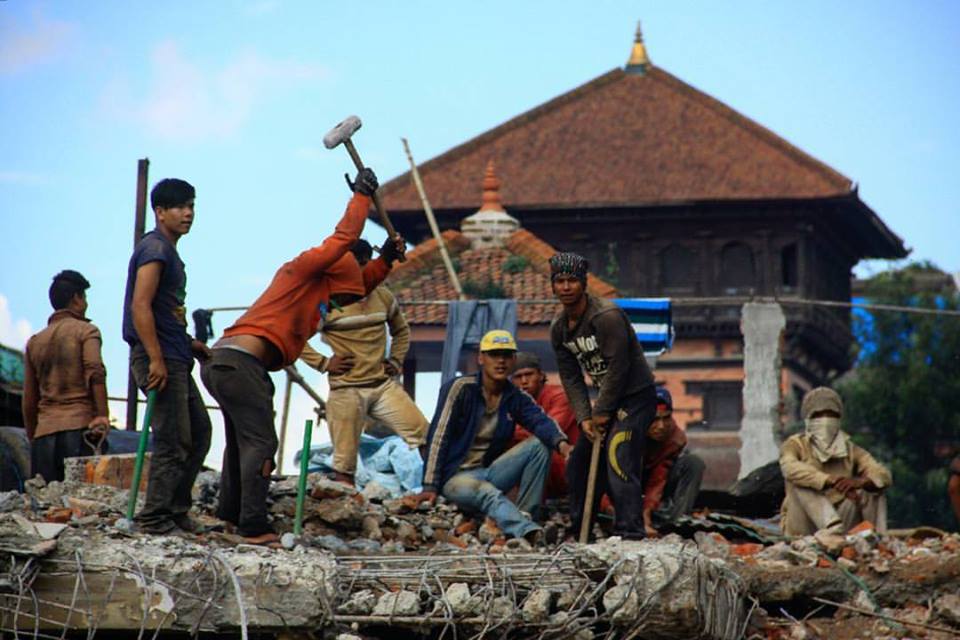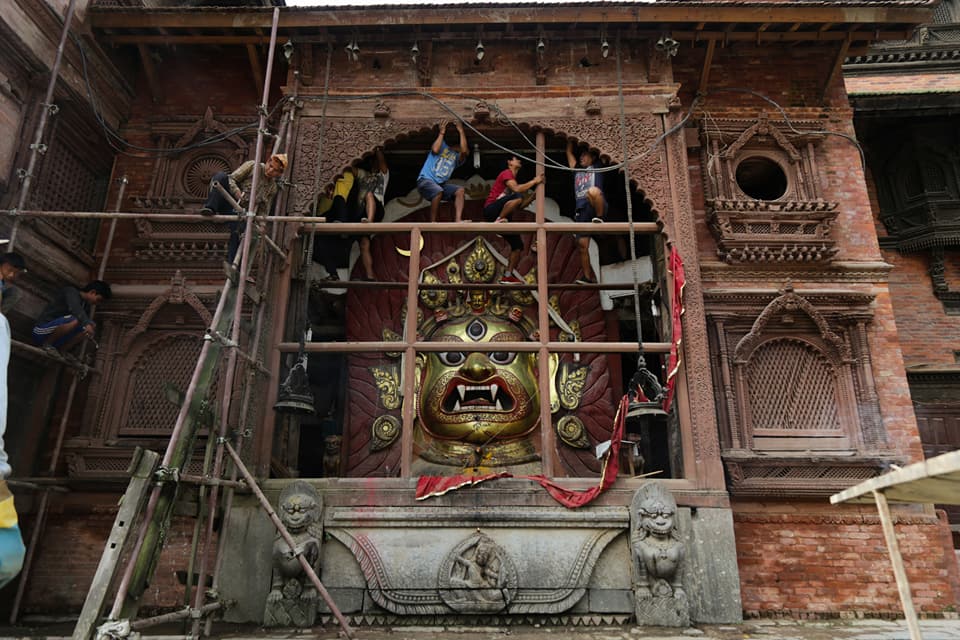
Welcome to Kathmandu. Kathmandu, which has been the center of administration since time immemorial is also a center of cultural, social and historical amalgam. As the name suggests, “Kath” means wood and “mandu” comes from a word “mandapa” which means a pavilion. Kathmandu, hence is said to have got its name from Kasthamandap (Maru satta:), which used to be a public pavilion, believed to have been made out of single tree and also the oldest heritage structure standing before devastating earthquake 2015 took it down to ground.
On April 25th, 2015 at 11:56 am local time, a massive earthquake hit Nepal with its epicenter in Gorkha and several powerful aftershocks as well another huge earthquake followed. According to National Society for Earthquake Technology-Nepal (NSET), it is the most powerful disaster to strike Nepal since the 1934 Nepal-Bihar earthquake. This disaster caused massive damage to human lives, with 9000 death toll and nearly 22000 injured. The disaster obviously didn’t spare the precious architectural and cultural assets and turned them into ruins.
According to the preliminary report of Department of Archaeology, a responsible government agency for protection, conservation and management of the cultural heritage of Nepal, 745 monuments in all over Nepal were affected by the earthquake, out of which 133 were totally collapsed and 517 monuments were partly damaged.

In regards to Kathmandu, Newars are the original inhabitants of Kathmandu valley who have been recognized as a civilization with great historic culture and rich tradition and rituals. One can see the reflection of the civilization in the art and architecture of the valley. There was a famous saying that describes Kathmandu as a place where the number of temples is equal to number of houses and the number of gods and goddesses equals to number of people living here. Well, the statistics may not hold true in today’s time, but one can be sure to come across one temple or at least a shrine, in every one minute walk through the core settlement of Kathmandu. The particular feature of the heritage here which makes it different from others is that these are the living heritage. The tangible and intangible aspects together combine to keep the cultural heritages of Kathmandu valley alive. The monuments here are more than just a piece of art as people are directly connected to these structures through their faith and belief in them which is reflected in the rich traditional practices that people follow till date.
The Kathmandu Durbar square, which is one of seven protected Monument Zones in the Kathmandu valley, is one of the most severely damaged zones during the earthquake 2015. According to DoA’s preliminary list, 11 monuments collapsed and 39 of them were greatly damaged out of 97 classified monuments of the Kathmandu Durbar square. However, this disaster did not stop people from observing the annual rituals and centuries old practices which they have been carrying out since the existence of the early structure till present day, regardless of the absence of the tangible. This very spirit of people to their heritage is what makes Kathmandu a unique living heritage which it exhibits in every single detail of existence. Soon after the earthquake, the rescue operation took place. Once people settled down safely after the shake, salvaging and sorting of artifacts of the collapsed monuments was carried out and was completed in two years. Now at present, more than a dozen of monuments have completed their restoration including Panchamukhi Hanuman temple, Gaddhi Baithak, Chyasin dega, Pratap pillar, Kageshwor temple, Mahadev temple, Mahavishnu temple, Saraswati temple. Other major monuments are also picking up the pace of restoration and reconstruction including the oldest monument Kasthmandap, Maaju dega, Trailokya Mohan Narayan temple and Nautalle durbar chowk . The documentation, reconstruction and restoration work in Kathmandu Durbar Square is being supervised and coordinated by DoA and being carried out and funded by many agencies, authorities and organizations like Hanumandhoka Durbar Museum Development Committee (HDMDC), Kathmandu Metropolitan City (KMC), Local community, Local government, Kathmandu Valley preservation Trust (KVPT), Ambassador’s Fund for Cultural preservation (AFCP)and Government of China.
The Kathmandu Durbar Square spread over an area of about 5 acres is a palace complex, which includes numbers of temples, shrines, statues, historic pillars, inscriptions, ancient water spouts as well as courtyards, each of which tells a unique story from the past. The myths and legends that each one of them holds makes it a fairy tale land. However, the stories are not limited to just myths, there are logical explanations to each of the beliefs that these festivals, rituals and structures hold, if you listen carefully. One can be truly amazed by the grand architectural marvel which can also be called a living museum in its own. What is amazing about the place is that one can find heritage structure as grand as Kasthamandapa to a simple stone lying in the middle of a road, both of which can have an equal importance to the local devotees; hence one should not get confused over the grandeur of a monument by judging the size and scale of the structure.
The space here has a beauty of change, meaning, it offers a variety of ambience depending upon the time of the year you choose to visit it. If you arrive at the Nasal chowk during the beginning of spring, you might be able to catch a glimpse of “Basanta Shrawan” – a musical performance, which is being carried out since medieval period. If you arrive here during one of the major chariot processions like Rato Machhindranath Jatra, you will find a marching band on your way to the palace complex. If it is the time of Seto Machhindranath jatra, you will simply find a tall chariot standing in the middle of the road with devotees paying homage and lighting butterlamps all around the chariot. If Indra Jatra is being observed, then you will be amazed by how the square is full of people, with chariots with living Gods and Goddess ready to make its way through the narrow streets of the core settlement, along with masked dance being performed here and there. Be prepared to be amazed by what the city has to offer you depending upon when you decide to pay a visit here. If you are lucky, you may come across the living goddess Kumari pass by you in her golden palanquin, as she lives right across the street in Kumari chhen, a traditional Newa courtyard in front of Gaddhi Baithak. It is only 13 times a year when she steps out of her residence, during major festivals that she herself takes part in. However, everyday for the rest of the year, she appears in the central window of the South wing from Kumari chhen, once or twice a day to give a glimpse of her to her devotees and curious tourists who wait for the moment in the courtyard.
Most of the monuments that you come across here in the Kathmandu Durbar square have their connection back to late medieval period although there are stone idols as old as 7th century A.D. that one can witness here. Although the area is small compared to other grand heritage sites, Kathmandu durbar square in actual is a collection of layers of history that has been written over years and years. If one offers enough time, patience and attention to the details that the art and architecture provides here in the square, one can find details in a volume that is much bigger than what a naked eyes can see.
When you are here, give yourself enough time to dwell in the details: be it in the struts of Jagannath temple, the pair of Mahadev Parvati gazing through their window in the second floor of Nava Yogini temple, the terracotta art in the plinth of Kumari chhen, the mini soldiers’ story depicted in the first floor cornice of the Nava Yogini temple, the wrathful eyes of Haathu dya inside the lattice window of Shwet Bhairab temple, the grand Hanuman residing beside the Hanumandhoka, the alphabets in the amazing 15- language inscription by 17th century King Pratap Malla, the mysterious expression of Kal Bhairab. Just make sure you emerge in the depth of layers and layers of history in here.

While the devastating earthquake has caused major damages to most of the heritage structures here in the durbar square, people are still keeping up with the intangible cultural heritage with same enthusiasm as ever. With four years from the disaster, monuments are slowly rising back to their original state. About one third of the reconstruction works have been completed, while the rest of them are also on their way to build back, ensuring to bring back the glory of the durbar square as it is meant to be.
Written By: Alina Tamrakar, Architect working for Heritage Conservation


Very Informative, Thank you Alina!